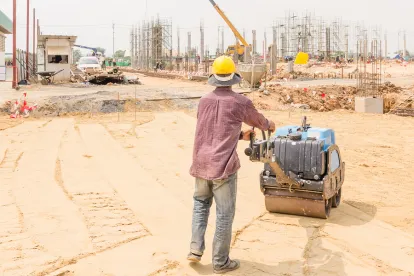On July 17, 2019, the Ohio Supreme Court resolved any doubt regarding the scope of Ohio’s construction statute of repose (R.C. 2305.131) and with it, delivered a clear victory to construction contractors in Ohio.
In New Riegel Local School District Board of Education vs. Buehrer Group Architecture and Engineering, Inc., et al., 2019-Ohio-2851, the Supreme Court of Ohio clarified that the statute of repose applies to “all causes of action,” whether sounding in tort or contract, that seek “to recover damages for bodily injury, an injury to real or personal property, or wrongful death, that arises out of a defective and unsafe condition of an improvement to real property *** against a person who performed services for the improvement to real property or a person who furnished the design, planning, supervision of construction, or construction of the improvement to real property.” Before New Riegel, questions arose whether the statute of repose only applied to tort claims or whether contract claims were also included.
A statute of repose, like a statute of limitations, cuts off legal rights if claims are not brought within a certain period of time. A statute of limitations requires parties to file claims within a prescribed time after the party suffered injury; in contrast, a statute of repose sets a deadline for filing claims after the occurrence of a certain event, even if that event does not itself cause harm or give rise to a potential lawsuit. Here, Ohio’s statute of repose bars claims 10 years after a construction project was substantially complete, regardless of when a breach of contract occurred. In New Riegel, the construction at issue was substantially completed in 2002. The New Riegel Local School District filed suit in April 2015, alleging breach of contract and warranty claims. The trial court dismissed the case by relying on the statute of repose, finding that the suit was filed more than 10 years after substantial completion. The Third District Court of Appeals reversed and held that the statute did not apply to contract claims.
The Supreme Court of Ohio held that the statute of repose applied to both tort and contract claims, but remanded the case to lower courts to consider the application of its decision to facts of the case. According to the Court, extending the statute of repose to include contract claims was in keeping with the Ohio General Assembly’s stated intention “to protect defendants from having to defend against stale claims … the perils of which are the same whether the underlying claim is based in contract or tort.”
An open question remains, however, regarding how this decision will apply to the facts in this case. The Court left open the question of whether a claim that “accrues” within the 10 year-repose period, even though that claim was not filed, can be filed past the 10-year limit. Justice Kennedy and Justice Dewine, who had agreed with the majority opinion, found this to be a distinction without a difference. They believed that R.C. 2305.131 was a “true statute of repose, i.e., one that bars accrued claims as well as those that have not yet vested.” In other words, there is no need for lower courts to apply New Riegel because the statute, on its face, bars claims from proceeding after the 10-year period expires.
Justice Stewart was the sole dissenter of the majority opinion as a whole. She reasoned that the statute of repose did not extinguish contract rights, and that the majority opinion incorrectly discarded Kocisko vs. Charles Shutrump & Sons Company, 21 Ohio St. 3d 98 (1986), a prior Supreme Court of Ohio case finding that, under a prior version of the statute, contract claims were not subject to the repose period.
No matter how New Riegel is read, its impact is clear: parties must be diligent in identifying their legal claims and filing suit against those liable. New Riegel teaches us that one must use the power of litigation or otherwise lose the opportunity to do so if a claim becomes invalid after the repose period expires.




 />i
/>i

